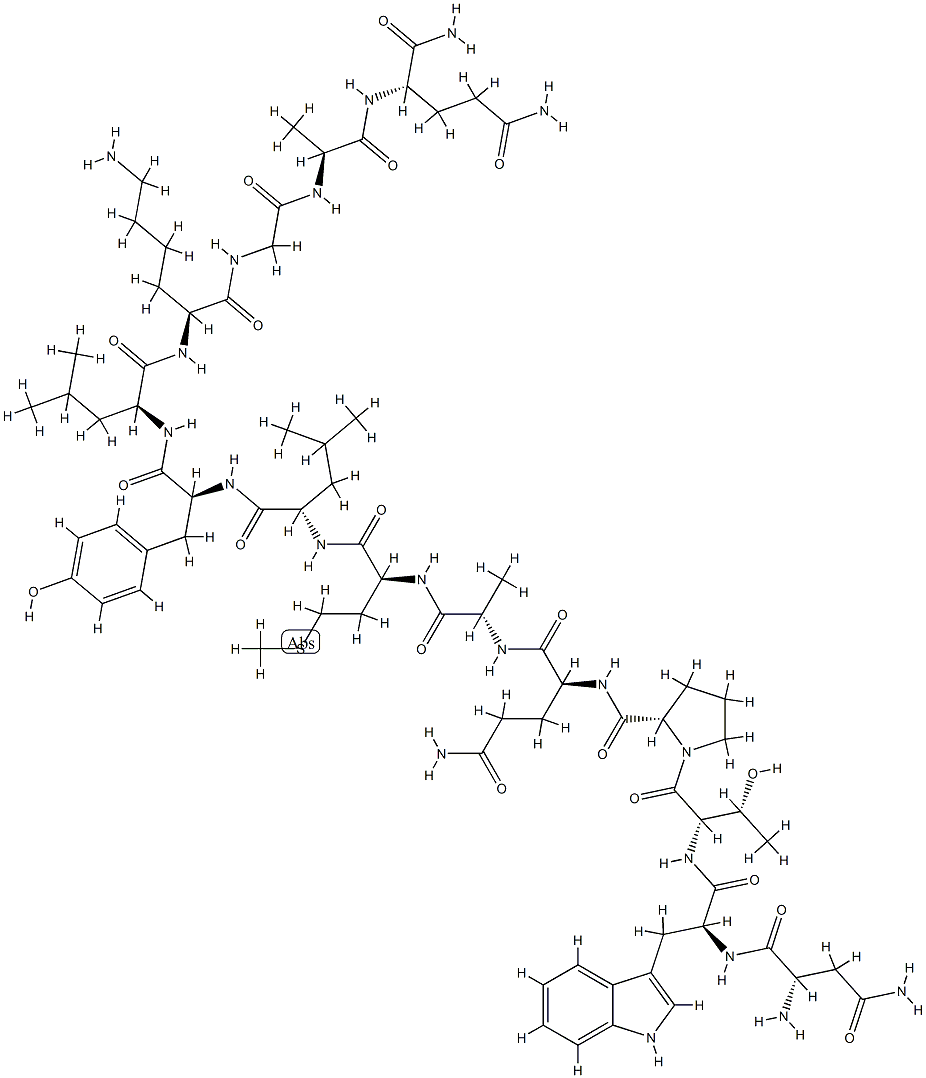Spexin (SPX), namely neuropeptide Q (NPQ), is a new identified peptide hormone. Spexin was first identified in human genome through bioinformatic method based on a hidden Markov model (Mirabeau et al., 2007). Then spexin was confirmed by biochemical method and was first detected in the esophagus and stomach of mice (Mirabeau et al., 2007). The prepropeptide human spexin containing 116 amino acid residues was encoded by C12ORF39 gene (Wan et al., 2010). In humans, the precursor of spexin contains a signal peptide, two prohormone cleavage sites, and predicted processed peptide (Sonmez et al., 2009). The small amino acid sequence between dibasic cleavage sites with C-terminal amidation was called spexin (Sonmez et al., 2009). The nuclear magnetic resonance (NMR) analysis indicates that the molecular surface of spexin (gold fish) is largely hydrophobic except for Lys11, and its 3D structure is an α-helix from Gln5 to Gln14 with a flexible NH2 terminus from Asn1 to Pro4 (Wong et al., 2013). The amino acid sequence of the spexin is highly conserved among various species (Figure 1; Wong et al., 2013), suggesting that the peptide has an essential property during biological evolution and may be potentially involved in regulating a variety of physiological and pathological functions. The spexin paralogous gene (spexin2) was identified in vertebrate chromosomes. However, mammals do not have spexin2, like spexin (namely spexin1). Spexin2 encodes a mature peptide containing 14 amino acids with amidation at the C terminus, named spexin2 (Figure 1; Kim et al., 2014).
www.frontiersin.org